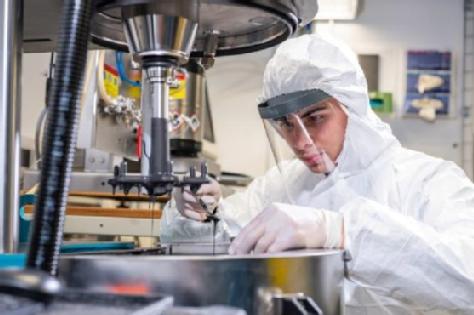WMG Insights
Exploring Artificial Intelligence Applications in Battery Manufacture
AI methods come into their own in development work for the emerging UK battery manufacturing sector
The quality of battery manufacture plays a direct and pivotal role in deciding battery performance, significantly affecting the product using the battery. As battery manufacture is a complicated process involving chemical, mechanical and electrical operations, the parameters involved at each stage of battery manufacturing directly and significantly determine the final qualities of the battery product. Therefore, it is crucial to accurately analyse the parameters within the battery production chain for achieving optimised battery manufacturing.
Engineers often rely on their experiences, expert advice, and trial-and-error to analyse or evaluate the parameters within the battery production chain. The difficulty of these approaches is that they take a tremendous amount of work and time, slowing battery product development, introducing variability in quality, and there is often difficulty in capturing the performance of manufactured batteries in the preliminary stages of production.
Against this backdrop, advanced data science solutions are needed to effectively analyse manufacturing parameters and better quantify their interactions during battery production. With the rapid development of cloud platforms and machine learning technologies, Artificial Intelligence (AI)-based methods have become a powerful tool for effective battery data analysis.
Dr Kailong Liu leads the AI-powered data analysis for battery manufacturing at WMG supported by the High Value Manufacturing Catapult. Recently, the team proposed an interpretable AI method that can effectively predict battery product properties and explain dynamic effects and interactions of manufacturing parameters. The method developed, known as “Random forests regression models,” provided a high accuracy (R-squared values of 0.98) to predict various capacity measures of the final cell. Due to its data-driven nature, this method can be easily adopted by engineers, as no specific knowledge of battery manufacturing mechanisms is needed.
By using real battery coating data from the WMG manufacturing line to evaluate the proposed method, illustrative results show that three types of battery capacities (cell capacity, gravimetric capacity, and volumetric capacity) can be accurately predicted at the early stage of battery manufacturing. In addition, information on how the variations in coating mass, thickness, and porosity affect these battery capacities can be effectively identified, while the interactions of these coating parameters are also quantified.
The developed method opens a promising way for quantifying the interactions of battery manufacturing parameters and explaining how the variations of these parameters affect the final battery properties. This could help engineers gain important insights into the underlying complex material and manufacturing behaviour of batteries, which in turn will benefit intelligent control of battery manufacturing.
With the support of the High Value Manufacturing Catapult, Dr Liu is also working closely with battery manufacturers such as UKBIC to develop data analysis tools. Dr Liu worked with UKBIC engineers to quantify and visualize the quality of their electrode coatings, and to scale up the data analysis tools to industrial scale applications. The work has been positively evaluated by UKBIC Technical Specialist Paul Blackmore, as helping UKBIC better understand and quantify battery manufacturing process quality and capability. If this data analysis method could be adapted to run in real-time as the electrodes are being manufactured, then it has the potential to significantly change how electrodes are manufactured – simultaneously improving quality, yield, and sustainability.
The related work has been published in a leading control engineering journal - Control Engineering Practice (CEP) featured under the “Emerging Leaders in CEP” series.
Find out more about WMG's Energy research here
- Liu*, M. F. Niri, G. Apachitei, M. Lain, D. Greenwood, J. Marco. Interpretable machine learning for battery capacities prediction and coating parameters analysis. Control Engineering Practice, 124 (2022): 105202. ('Emerging Leader in CEP' award)
- F. Niri, K. Liu*, G. Apachitei, L. R. Ramirez, M. Lain, D. Widanage, J. Marco. Machine learning for optimised and clean Li-ion battery manufacturing: Revealing the dependency between electrode and cell characteristics. Journal of Cleaner Production, 324 (2021): 129272.

